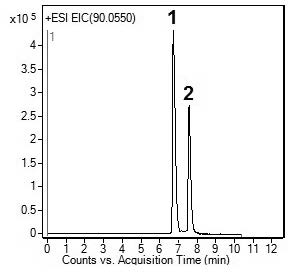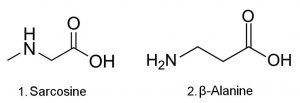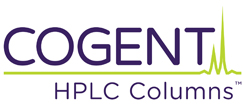Separation of Potential Urine Biomarker from Isobaric ß-Alanine
This developed LCMS method can separate Sarcosine from Beta- Alanine in serum and urine samples without using labor intensive sample derivatization. Since Sarcosine is considered a potential biomarker for prostate cancer risk and aggressiveness, it is essential to resolve and accurately quantify this compound in the presence of isobaric (same m/z) Beta-Alanine.
The developed method is Sensitive, Specific, Quantitative, and Reproducible (%RSD = 0.1). It can be used in large scale studies with numerous samples (high throughput of the method due to simple sample preparation).


Peaks:
1. Sarcosine
2. ß-Alanine
Method Conditions
Column: Cogent Diamond Hydride™, 4μm, 100Å
Catalog No.: 70000-15P-2
Dimensions: 2.1 x 15mm
Mobile Phase:
—A: 50% Isopropyl Alcohol / 50% DI Water / 0.1% Acetic Acid
—B: 97% Acetonitrile / 3% DI Water / 0.1% Acetic Acid
Gradient:
| Time (minutes) | %B |
| 0 | 75 |
| 3 | 75 |
| 4 | 65 |
| 5 | 65 |
| 10 | 20 |
| 12 | 75 |
Temperature: 50˚C
Post Time: 5 minutes
Flow rate: 0.6mL / minute
Detection: ESI – POS – Agilent 6210 MSD TOF Mass Spectrometer
Injection vol.: 1μL
Sample Preparation: 10mg / L each of Sarcosine and Beta-Alanine in 50:50 A:B
Note: When Reversed Phase Columns were evaluated for their ability to separate Sarcosine from Beta-Alanine, both compounds eluted at the solvent front and were not separated. To achieve separation, a very intensive sample preparation has to be employed (e.g. derivatization) when using RP methods.
Attachment
No 129 Sarcosine Analyzed with LCMS pdf 0.2 Mb Download File


